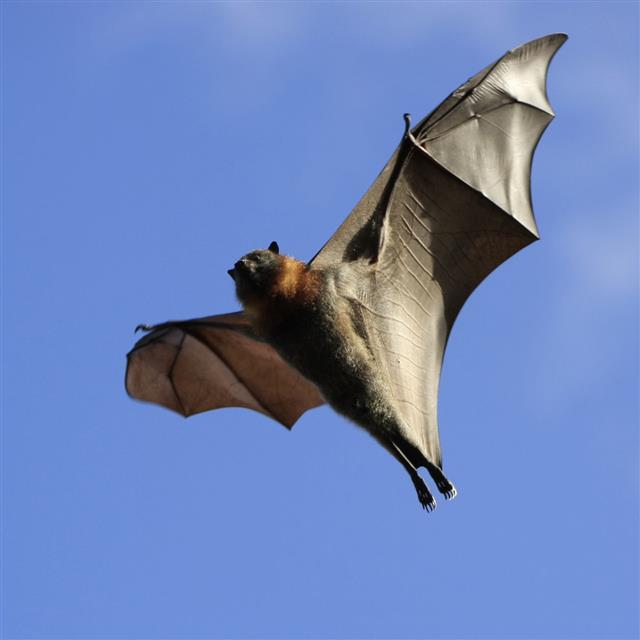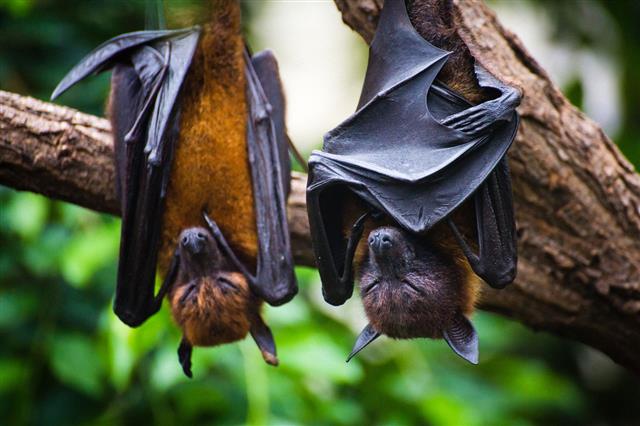
Tap to Read ➤
Is it Possible for Bats to See in the Dark?
Bats are nocturnal mammals, who have an amazing night vision. Read on to know how these mammals use their senses to navigate their way through the night.
Amruta Gaikwad



Webbed wings and an amazing night vision make bats, the only flying mammals, navigate in the dark. There are several species of insectivore and frugivore bats. However, certain species such as the vampire bats also feed on other mammals. They are often mistaken for birds.

There are two identified suborders of bats known as Megachiroptera and Microchiroptera. Bats from these orders differ in size and also have different ways of seeing at nights. Let us understand this difference in detail.

Night Vision of the Megachiroptera Bats

There are 166 species of megabats, which feed on nectar, flowers and fruits. Unlike the name, bats from this suborder may or may not be large. However, they have different techniques of using their senses to navigate in the dark. Unlike the Microchiroptera, these bats do not use echolocation.

Some of the interesting facts about bats show that they have excellent smell and well-developed eyes, that enables them to recognize ultraviolet light. Megabats have huge eyes and visual processing centers that enable them to see in the dark. The cells in the eyes are very sensitive to light and have rods, that allow the bats to visualize in the dark.

Night Vision of the Microchiroptera Bats

Microchiroptera bats are insectivores and also feed on rodents, small birds and reptiles. Bats of this suborder have blurred vision, but they are often misunderstood to be blind. At night, these mammals can very well see the silhouette of the objects and can also see ultraviolet light.

Microbats can recognize objects and distinguish them by their shape and size, while they fly into the night sky. Hearing and smell senses are strong, that help them to hunt down food even in complete darkness.

Echolocation is another faculty which enables them to navigate in the dark. This is a method wherein the bat emits certain ultrasonic sounds to produce echoes. Echoes help them to determine the distance between the objects and them. This makes night navigation easier for the microbats.
They emit sound waves, which are reflected off the objects in the way and comes back in the form of echoes.
The brain and auditory system of microbats creates a detailed picture of the object and the distance. Their calls are intense and they use different techniques to distinguish between their call and echo. Microbats have the ability to stop their calls and listen for the return of the echo. This technique is called the Low Duty Cycle Echolocation.
During the flight, as they emit the sound, they immediately contract the muscles of the middle ear to avoid deafening. The interval between the emission of the sound waves and the echoes, enables them to relax the muscles. This allows clarity of the echo and determines the range of the object.
Other technique is High Duty Cycle Echolocation, wherein the bat constantly emits sound waves and at the same time listens for the echo. They emits sound waves, that goes beyond the objects. Hence, they receive fine and clear echo.
Other than echolocation, they use their other senses to navigate in the night. Bats have poor vision but they are not blind. However, when the objects are beyond the range of echolocation, these mammals use their eyesight to determine the distance between them and the object.
They also have a very strong hearing and smell senses, that help them hunt efficiently in the dark. Ultraviolet light also allows them to see during the night.
These mammals are vital to the environment. They act as pollinators and even transfer seeds from one plant to other. Frugivores consume the nectar from the flowers and during the process pollens get stuck to their bodies. As it goes on to other flowers, it deposits the stuck pollen. They stay active at nights, which help them conserve their energy.
However, the population of these nocturnal mammals is dwindling due to cutting down of trees, which is there common habitat. This problem is also causing scarcity of food, which is pushing the frugivores to extinction. As seen earlier, they are an essential factor of the environment and hence, they should be well protected from the extinction.